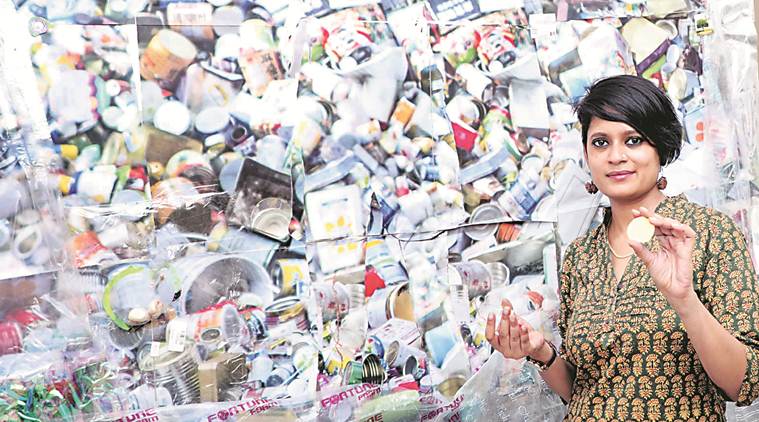Published: June 2, 2019 5:13:44 am
‘One version of our civilisation is known by the trash it leaves behind’: Shraddha Borawake
All the leftovers of consumerism, from plastic wrappers to fish eggs to dead bees, are raw material for Pune-based artist Shraddha Borawake, who talks to The Indian Express about her long-term art project Garb-Age through which she invites experts to make shrines using curated waste.

Shraddha Borawake knows secret gullies, hidden streets and unique characteristics of Pune. She goes where most people rarely do, from shacks of migrant workers at construction sites to the silent cremation grounds of British soldiers. In 2016, during a visit to the Blue Diamond Bridge in Pune, she came across an undulating terrain of urban waste, made up of discarded beer cans, plastic packets and industrial end products. Staring at it, Borawake had a revelation. “I realised that one version of our civilisation is known by the trash it leaves behind. It speaks volumes of the experience that has created this menacing pile,” she says. This inspired a long-term art project called ‘Garb-Age’. An aspect of the project has been selected for ‘Five Million Incidents’, organised by Goethe-Institut Max Mueller Bhavan and conceptualised by Delhi-based Raqs Media Collective. Borawake has recently graduated as an interdisciplinary artist from Piet Zwart Institute in Rotterdam, Netherlands. One of her strongest works is a cross-cultural dialogue between woman construction workers of India and the US, which is being used by a policy group on labour rights in the US. Borawake’s works use photography, videos and sculpture to expose layers drawn from Indian spirituality, Western theory and chance encounters. She says, “Through the lens, I am like a voyeur of life. Over the years, my observation of the lived experience has became the raw material for my expression – an effective way to respond to the urgency of the times we live in.” Excerpts from an interview:






















No hay comentarios:
Publicar un comentario